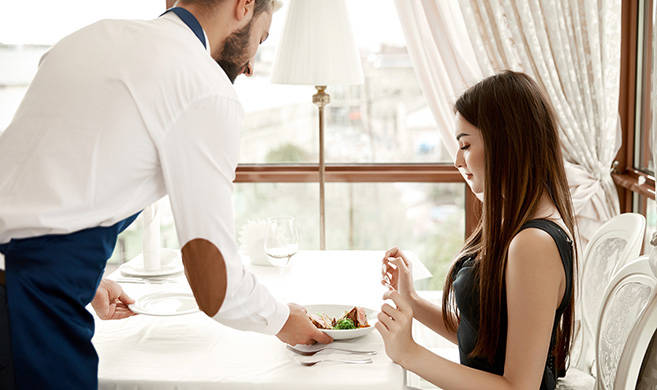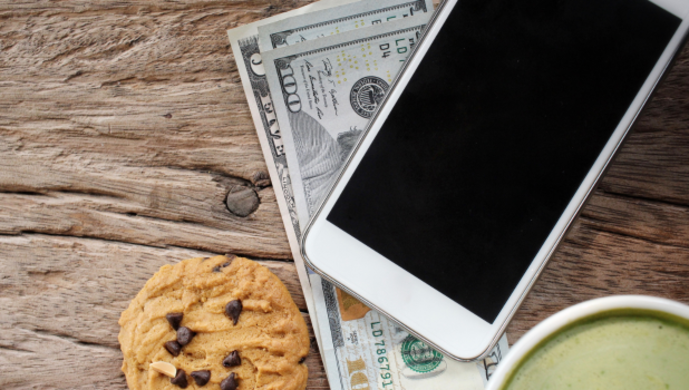“Choice closure” and how to increase the satisfaction of a purchase from a large range of choice options
The previous research (Gu, Botti & Faro 2013) showed that when making a choice from large range consumers are more satisfied with their choices when they engage in physical acts of closure, such as shutting a menu or closing the internet browser after choosing an item.
This physical act helps our brain to accept the finality of a choice, especially when making a choice from a large range. We see a decision as finished and resolved, and this small act helps to avoid regretting a purchase and to be satisfied about it. This phenomena is called “choice closure”. (Learn more on "Choice Closure" on coglode and on convertize)
What is the effect of choice closure on consumers’ satisfaction following decisions with negative or positive outcomes?
Imagine a consumer who picked a bad dish at a long-awaited celebratory dinner. Her natural inclination would compel the consumer to reconsider the potentially superior menu options she had discarded. If she intended to still enjoy her dinner, would she follow this inclination, or would she resist it and seek choice closure by keeping the menu closed? Now imagine the same consumer picking a good dish. Her natural inclination would prevent her from reconsidering the inferior meals she has avoided. Would she do that, or would she instead deliberately avoid choice closure by keeping the menu open?
Consumers are more satisfied after achieving choice closure with an inferior outcome and after not achieving it with a superior outcome.
The two laboratory experiments, using real choices and consumption experiences, show that consumers are more satisfied after achieving choice closure with an inferior outcome and after not achieving it with a superior outcome. Study participants choose from a selection of products (e.g., chocolates). After making their choice, participants are given information that portrays their selected product either as inferior or superior to the rejected ones. While experiencing the selected product, half of the participants are exposed to a visual cue that triggers a sense of choice finality whereas the other half are not exposed to this cue. For example, while eating their chosen chocolate, participants see the rejected chocolates with “rejected” labels or without these labels. Participants who see the “rejected” labels report liking the inferior chocolate more than those who do not see the labels; in contrast, participants who do not see the “rejected” labels report liking the superior chocolate more than those who see the labels.
Can consumers use triggers of choice closure strategically to improve their satisfaction?
Past research has also shown that this sense of choice finality can be externally triggered without consumers being aware of it, for example by being asked them to close a menu after selecting one of the featured food items. It is a useful tool for marketers to offer their customers to improve their satisfaction, especially when there are many options. We then wondered if consumers were able to use triggers of choice-closure in a deliberate way to enhance satisfaction of a decision they have made.
The two additional studies use a similar set up as the ones described above, but ask participants to predict how the presence or absence of the choice-closure trigger (e.g., the “rejected” labels) would impact their satisfaction. Results show that participants expect greater satisfaction when they deliberately avoid the “rejected” labels following the choice of an inferior chocolate and when they deliberately seek the “rejected” labels following the choice of a superior chocolate.
Consumers are likely to be unable to strategically use choice closure as a means to enhance satisfaction with the outcome of a decision they have made.
These results demonstrate that participants’ expectation contrasts with their experienced satisfaction. In other words, consumers are likely to be unable to strategically use choice closure as a means to enhance satisfaction with the outcome of a decision they have made. Going back to the initial example, these results imply that the consumer would keep the menu open after selecting an inferior meal and close the menu after selecting a superior meal. This tendency would hence undermine, rather than enhance, her/his enjoyment of the dinner.
What are the practical applications in marketing?
The current research relates to situations in which the evaluation of the outcome after a choice is affected by information that was unavailable during the decision, for example when consumers review experts’ comments or hear about peers’ experiences after having made a purchase. This research shows that the design of website pages featuring, or not, visual cues triggering a sense of choice finality can influence post-choice satisfaction.
The design of website pages featuring, or not, visual cues triggering a sense of choice finality can influence post-choice satisfaction.
This research suggests that when consumers experience an inferior outcome, marketers should introduce choice-closure triggers to help them improve the post-choice satisfaction. In contrast, when consumers experience a superior outcome, marketers should not introduce a choice-closure trigger, as reaching closure on an inferior outcome would undermine consumer’s consumption experience.
From a consumer’s perspective, this research suggests that to enhance satisfaction, consumers should counteract their natural inclinations by seeking closure after choosing poorly and by avoiding closure after choosing successfully.
Cover Photo Credit ©mnimage-AdobeStock












